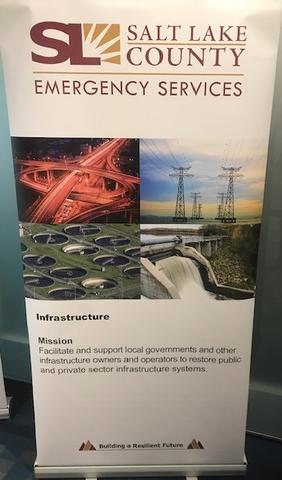
Emergency managers, industry professionals, and other staff from Salt Lake County (SLCo) and local jurisdictions gathered on Oct. 10, 2018, in West Valley, Utah, to learn about and use the NIST Community Resilience Planning Guide for Buildings and Infrastructure Systems. The representatives from SLCo, as well as cities and townships within the county and officials from the University of Utah and emergency service providers, were attending the 2018 “Resilient Salt Lake County” Conference. SLCo Emergency Services sponsored the event.
SLCo is the most recent among multiple communities around the country using the NIST Planning Guide to drive or complement ongoing resilience improvement planning. NIST staff and NIST Community Resilience Fellows are actively engaged in working with several of those jurisdictions. In addition to SLCo, which recently kicked off its project, Nashua, New Hampshire, and Bozeman, Montana, are using the NIST Planning Guide and benefitting from NIST staff and fellows’ expertise as they work on resilience plans that can be aligned with, and integrated into other community plans.
At the SLCo resilience conference, NIST Group Leader Therese McAllister described the Community Resilience Planning Guide process during one of two breakout sessions. According to Mike Barrett, who leads the project for SLCo Emergency Services, “The breakouts were designed both to further SLCo’s NIST Guide-based resilience planning and to provide participants with an understanding of the process. We see this Guide and workshop as part of our effort to create a resilience movement.”
NIST Community Resilience Fellow Chris Poland led a hands-on session where groups of participants reviewed and revised initial descriptions of services provided in various SLCo building clusters and then set performance goals -- in terms of desired recovery time -- for building clusters if a hazard event were to strike. Next up: working through a collaborative planning team, SLCo will confirm and more fully detail performance goals for building and infrastructure clusters in an initial set of five key government buildings before determining how they would actually perform today.

